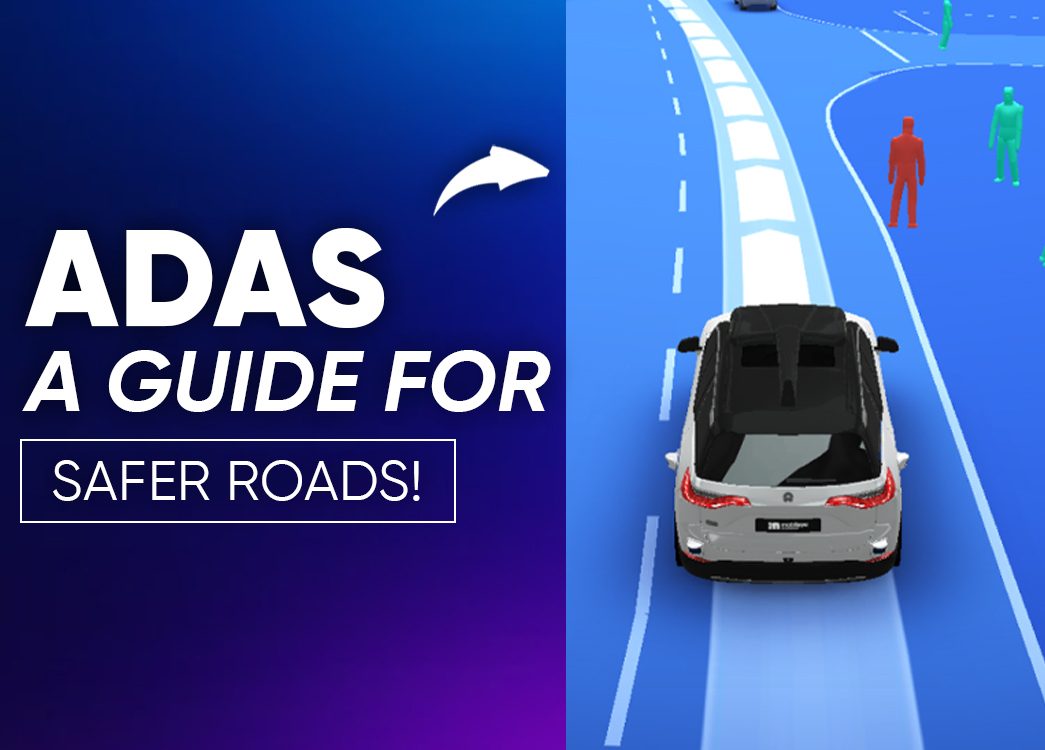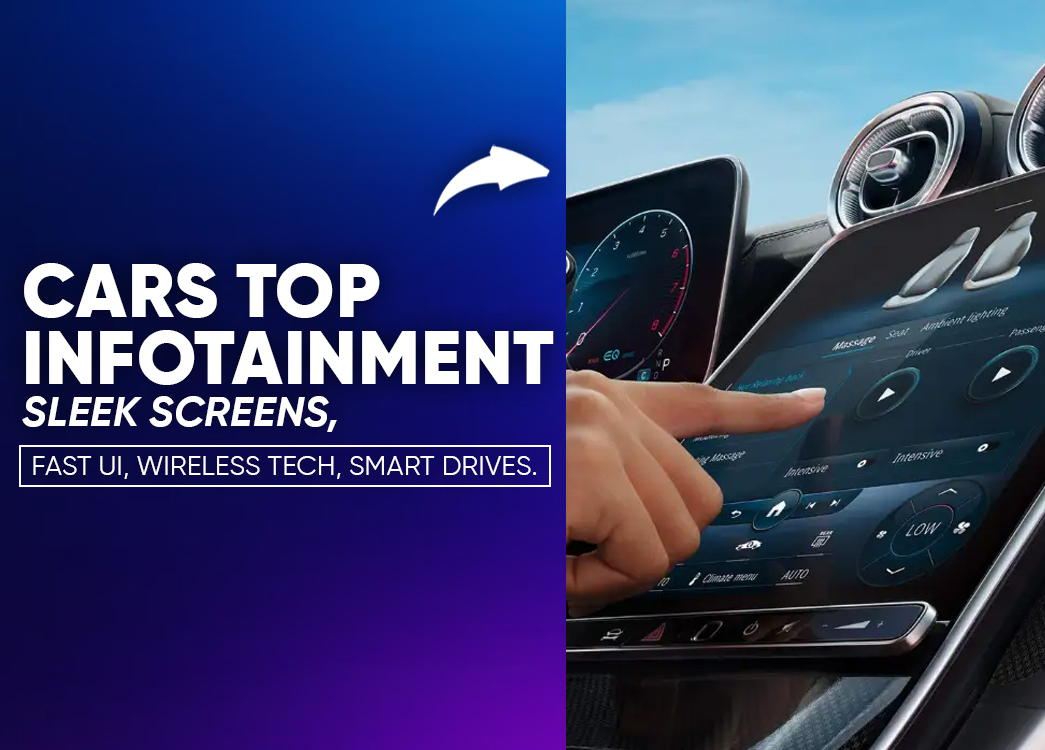
By creckk On 24-07-2025 at 7:35 am
How ADAS is Shaping the Future of Road Safety in India
Introduction: Road Safety Challenges in India
India’s roads are essential to its economy and culture, but they are also plagued with high accident rates. Each year, thousands of lives are lost, and families suffer due to road accidents. As vehicle ownership increases and traffic conditions become more complex, Advanced Driver Assistance Systems (ADAS) are emerging as a crucial solution to improving road safety. At the forefront of this revolution are ADAS engineers, whose expertise in cutting-edge technology is helping save lives and reduce accidents.
What is ADAS and Why Does India Need It?
ADAS (Advanced Driver Assistance Systems) refers to a set of technologies designed to enhance vehicle safety and assist drivers in avoiding accidents. These systems offer features like:
- Automatic Emergency Braking (AEB): Helps prevent collisions by applying brakes automatically.
- Lane Departure Warning (LDW): Alerts drivers when they unintentionally drift out of their lane.
- Adaptive Cruise Control (ACC): Adjusts the car’s speed to maintain a safe distance from other vehicles.
- Blind Spot Detection (BSD): Notifies drivers of vehicles in their blind spots.
Why India Needs ADAS
India faces unique challenges in road safety:
- Diverse road conditions: Mixed traffic with cars, two-wheelers, autorickshaws, and pedestrians.
- Human error: Over 40% of road accidents are caused by human errors such as speeding and distracted driving (NCRB).
- Unpredictable situations: Presence of livestock, unmarked lanes, and erratic driver behavior.
ADAS provides an additional layer of protection by offering real-time alerts and automated interventions to handle these challenges.
ADAS Tech: Bridging Technology and Safety
ADAS engineers are responsible for designing, developing, testing, and integrating these technologies into vehicles. Their role involves several crucial tasks:
1. Localization and Customization
Indian roads differ greatly from those in developed countries. Engineers localize algorithms and sensor systems to address challenges like:
- Unmarked or poorly marked lanes.
- Pedestrians crossing unpredictably.
- Mixed traffic conditions.
They refine object recognition systems to accurately identify people, vehicles, and animals, reducing false alarms and improving driver trust.
2. System Integration
Engineers collaborate with automakers to incorporate ADAS into various models—from budget-friendly hatchbacks to premium SUVs. This involves:
- Selecting the right hardware (cameras, radars, sensors).
- Developing robust software that adapts to Indian conditions.
- Rigorous testing and validation to ensure system reliability on Indian roads.
3. Continuous Improvement
Using data from vehicles equipped with ADAS, engineers evaluate performance and refine systems continuously. This iterative approach improves reliability and user experience, building greater confidence among Indian drivers.
Industry Examples: ADAS Engineering in Action
1. Tata Motors
Tata Motors has integrated features like Electronic Stability Control and Lane Departure Warning in its PRIMA and SIGMA trucks. Their European Technical Centre is developing adaptive cruise control and pedestrian detection tailored for India.
2. Mahindra & Mahindra
Mahindra, in partnership with Mando Corp, has introduced radar and camera-based Automatic Emergency Braking (AEB) in the XUV500. They are also researching semi-autonomous ADAS features for tractors and commercial vehicles.
3. Global Players: Mercedes-Benz, Hyundai, Continental
International companies like Mercedes-Benz, Hyundai Mobis, and Continental AG have established R&D centers in India. These companies employ local engineers to adapt their ADAS technologies to India’s complex traffic ecosystem.
Challenges and the Road Ahead
1. Infrastructure Limitations
Inconsistent or faded road markings and inadequate signage make ADAS implementation difficult. Engineers must account for poor infrastructure when designing adaptive systems.
2. Consumer Awareness
Many Indian drivers are unfamiliar with ADAS features. Awareness campaigns are needed to educate users about how these systems function and contribute to safety.
3. High Costs
ADAS-equipped vehicles are currently more expensive, limiting accessibility. But initiatives like Bharat NCAP are pushing manufacturers to include safety tech in more models, increasing demand and eventually lowering costs.
4. Government and Industry Collaboration
Collaboration is essential for large-scale ADAS adoption. With 5G connectivity and smart city projects on the rise, Vehicle-to-Everything (V2X) communication will further enhance ADAS performance and accuracy in India.
Conclusion: Transforming Road Safety in India
ADAS engineers are revolutionizing road safety by developing smart, localized safety solutions for Indian roads. Their work combines cutting-edge AI with deep knowledge of real-world driving challenges.
While cost and infrastructure issues remain, the future is promising. Growing awareness, regulatory push, and continuous innovation are helping India move toward a safer driving environment. With engineers at the core of this transformation, we can look forward to fewer accidents and more lives saved across the country.
FAQs About ADAS in India
What does ADAS stand for?
ADAS stands for Advanced Driver Assistance Systems. These are technologies designed to assist drivers in driving safely and avoiding accidents.
Are ADAS features available in Indian cars?
Yes, several Indian and global carmakers now offer ADAS features in vehicles sold in India, including brands like Tata, Mahindra, Hyundai, and MG.
Can ADAS work on Indian roads?
Yes, but the systems must be localized to handle unpredictable traffic, unmarked roads, and diverse conditions. Engineers are continuously customizing ADAS tech for India.
Is ADAS expensive?
Currently, ADAS features are more common in mid-range to high-end vehicles, but costs are expected to come down as adoption and demand increase.
Will ADAS replace drivers?
No. ADAS is designed to assist drivers, not replace them. These systems act as an extra layer of protection by offering alerts and automatic interventions.
What role does the government play in promoting ADAS?
Initiatives like Bharat NCAP are encouraging car manufacturers to include advanced safety features. Government support for smart cities and V2X technology also aids ADAS development.
Related posts









